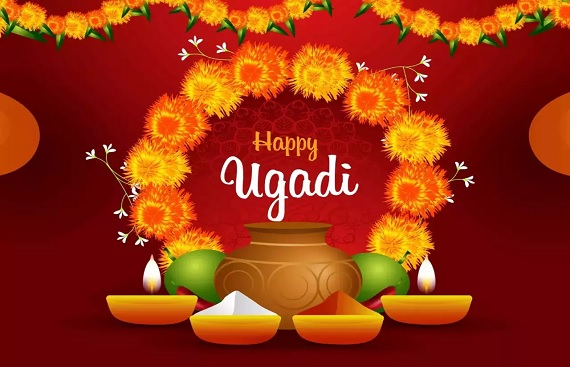Ugadi 2024: Where Culture Blossoms and Spirits Soar

Welcoming Ugadi 2024 also called Krodhi year! Ugadi is a special celebration for Telugu and Kannada people as it marks the New Year. But it's not just for them; Sindhis and Maharashtrians join in too, calling it different names in their states. Getting ready for the traditional New Year festival in South India involves thinking about customs and activities to welcome a fresh start. One way to enjoy Ugadi is through food. People make special dishes using neem leaves, jaggery, and raw mangoes, which signify life's mix of good and bad experiences. The feast also includes tasty foods like tamarind rice, sweet pudding, and a mixture of different flavors called pachadi.
Wearing traditional clothes is another important part of Ugadi celebrations. Women usually wear sarees or salwar suits, while men wear dhoti-kurtas or lungi-kurtas. These outfits are often bright and have beautiful designs that show the festival's lively spirit. Some folks also decorate their homes with rangolis, colorful patterns drawn on the floor using powders, to make the atmosphere more festive.
Besides these traditions, people might have their own ways of celebrating Ugadi, like praying at temples or performing fire rituals for a fresh start. Overall, Ugadi is about starting anew while cherishing old customs that bring everyone together for a happy occasion filled with food, fashion, and spirituality.
Ugadi isn't just about partying; it's about starting anew and being together as a community. It reminds us that life goes in circles, and every beginning holds promise. With its colorful celebrations, Ugadi shows how much we love our diverse cultures and traditions in India.
The way Ugadi is celebrated differs from one state to another, with each region having its distinct set of customs and traditions.
In Andhra Pradesh, the arrival of the New Year is enthusiastically celebrated as 'Ugadi', a term derived from Sanskrit denoting the beginning of a new era. This occasion, marked by the lunisolar calendar, symbolizes hope and rejuvenation for the people of Andhra Pradesh as it ushers in the Chaitra month in the Panchanga calendar. Similarly, Maharashtra observes the New Year as 'Gudi Padwa,' characterized by lively festivities and traditional rituals.
The diverse array of New Year celebrations across India emphasizes the country's rich cultural heritage. In Rajasthan, it is referred to as 'Thapna,' while in Sindh, it is known as 'Cheti Chand.' Tamil Nadu celebrates the New Year as 'Puthandu,' Punjab embraces 'Baisakhi,' and Manipur commemorates the occasion as 'Cheiraoba.'
In Manipur, Cheiraoba is noticeable by home decorations, culinary delights, and moments of spiritual contemplation. The festival concludes with a symbolic climb up a mountain, symbolizing progress and advancement in life. Meanwhile, in Bali and Indonesia, the Hindu community observes the New Year as 'Nyepi,' contributing another layer of cultural diversity to India's rich tapestry.
Even though the New Year is celebrated in several different ways, its main purpose stays the same – a time to start fresh, think about things, and have fun together. These celebrations show how diverse India is, but also how everyone comes together to enjoy and appreciate each other's cultures.
The core of Ugadi lies in the rebirth of life, and it teaches us to embrace variation and to look forward to fresh starts. It is a time to forget the past and to move forward with a renewed spirit. Ugadi is a reminder that life is a beautiful journey filled with different emotions and experiences, and we must cherish every moment of it.
Read More News :

.jpg)

